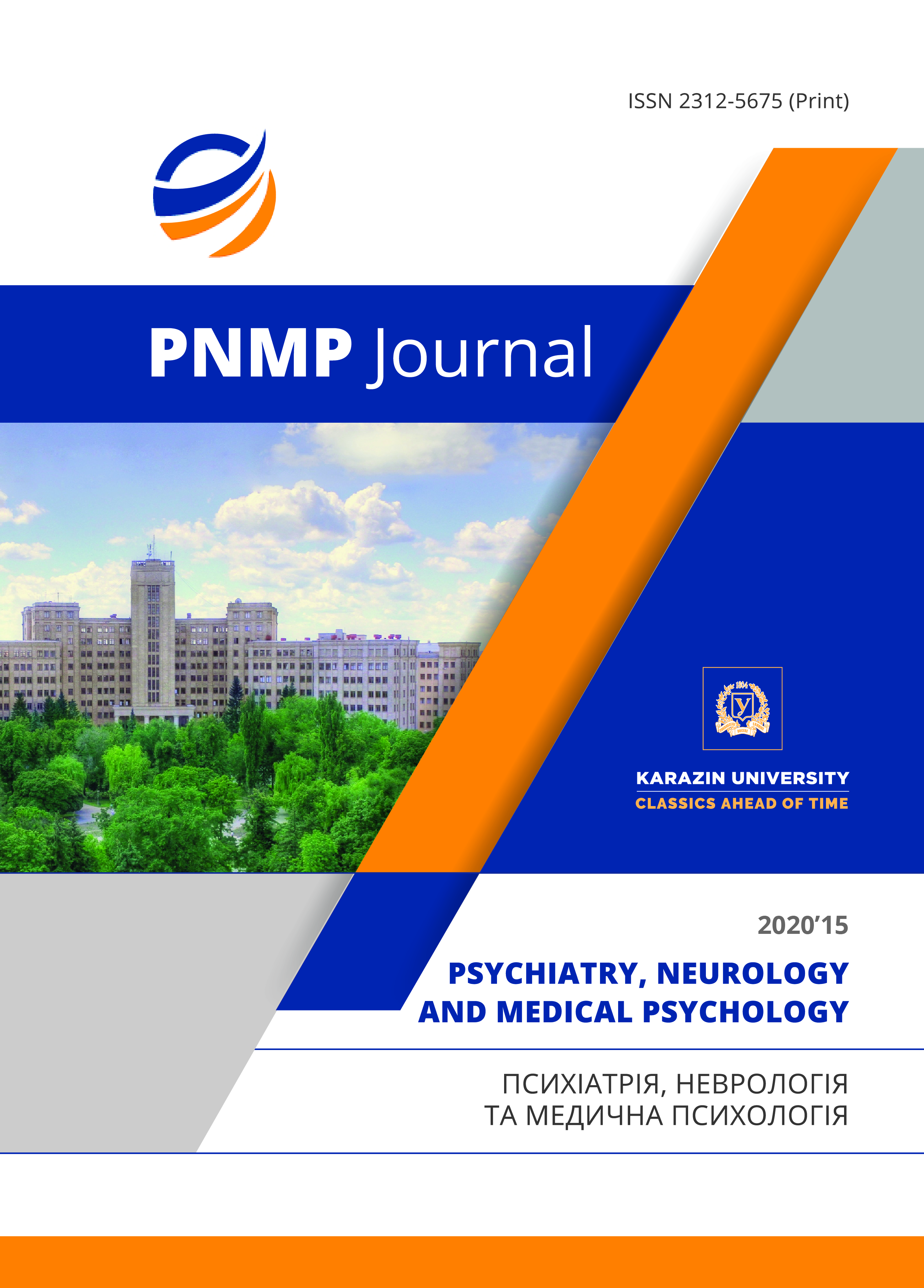Interdependence of basic emotional states and early maladaptive schemes of drug addict
Abstract
This article discusses the interdependence of basic emotional states and early maladaptive schemes (EMS) of drug addicts.
The purpose of the research is to study the interdependencies of basic emotional states with EMS of drug addicts. In accordance with the set purpose and objectives of the study, a research sample was formed. On the basis of informed consent in compliance with the principles of bioethics and deontology during 2019-2020, a psychodiagnostic study of 102 male patients with drug addiction of the opioid group was conducted on the basis of the rehabilitation center "Vertical", aged 18-26 years. For diagnostics of early maladaptive schemes the technique "Diagnosis of early maladaptive schemes" (YSQ - S3R) in adaptation of P. M. Kasyanik, E. V. Romanova was used. This technique is a questionnaire based on a presentation by J. Young (Handbook of Schema Therapy, 2015) on early maladaptation scheme (EMS). This term refers to a stable set of reactions, ideas, emotions that formed in early childhood under the influence of any adverse factors in the immediate environment. EMS are stable structures that affect the real perception of the world and the management of their own activities. J. Young identified 18 EMS, which are divided into five large groups (domains), which are interconnected to meet different basic needs: "lack of communication and rejection", "impaired autonomy and efficiency", "violation borders"; "focus on others", "hypervigilance and restraint". To diagnose the basic emotional states, the method "Scale of differential emotions" was used. K. Izard aimed at diagnosing the dominant emotional state using the scale of significance of emotions. The theory of differential emotions got its name through the centering on individual emotions and are central to a full life, namely the motivational sphere, social communication, cognition and action. Correlation analysis of the data was performed using the Pearson correlation coefficient.
It has been established that the current relationship between basic emotional states and EMS directly or indirectly supports the formation and development of psychological problems and behavioral disorders, namely drug addiction. Non-adaptive behavior occurs in response to EMS activation, which is dependent on basic emotional states, which in turn were key at the time of EMS formation. At the time of activation of EMS for drug addicts is characterized by a high level of negative feelings, such as severe resentment, anxiety, distress or guilt. Drug addicts, not wanting to be in the moment of EMS activation, usually use maladaptive behavior, which is normal for them and acts as a "mask" to escape from the painful experience and, above all, to avoid EMS activation. Experiencing negative emotional states "grief", "disgust", "fear", "anger", "contempt", "shame", creating correlations activate and reinforce the existing maladaptive schemes of drug addicts, which creates a situation of impossibility of desired changes, satisfaction own needs, achievement of goals and formation of socially acceptable values. The current life situation is experienced as inevitable, hopeless, they feel helpless, desperate and intolerant. The current relationship of a positive emotional state of "curiosity" with the existing EMS can weaken the previously formed maladaptive patterns, eliminating feelings of inferiority and marginality, creating conditions for resocialization and readaptation of drug addicts.
Downloads
References
Ilyuk R. D., Gromyko D. I., Berno-Bellecourt I. V. Characteristics of emotional disorders in addicts to psychoactive substances. Bulletin of St. Petersburg State University. 2011, no. 11, pp. 155-163. [in Russ.]
Kadyrov R. V., Kovalev I. A., Ilyina I. S. Mental trauma of an early age and psychological characteristics of the personality of drug addicts. Pacific Medical Journal. 2016, no. 4, pp. 66–69. [in Russ.]
Kasyanik P. M., Romanova E. V. Diagnostics of early maladaptive schemes / SPb., 2016, 146 p. (Polytechnic University). [in Russ.]
Galimzyanova M.V., Romanova E.V. Emotional experiences associated with childhood events and partnerships. Vestn. St. Petersburg. un-that. Ser. 12. 2011, no. 1, pp. 209–216. [in Russ.]
Young J. Schema Therapy Inventories & Related Materials. New York. 2015, 150 p. (Schema Therapy Institute).
Farrell J., Reiss N., Shaw I. The Schema Therapy Clinician’s Guide: A complete resource for building and delivering individual, group and integrated mode treatment programs. Oxford: Wiley-Blackwell. 2014, 329 p.
Mirović N., Mešković D. Explaining early maladaptive schemas (EMS): Connections between EMS and basic personality dimensions, affective attachment style, and empathy. New-York: Nova Science Publishers. 2017, 126 p. (Advances in Psychology Research).
Thimm J. Early maladaptive schemas and interpersonal problems: A circumplex analysis of the YSQ-SF. International Journal of Psychology & Psychological Therapy. 2013, no. 1, pp. 113–124.
Taylor C., Bee P., Haddock G. Does schema therapy change schemas and symptoms? A systematic review across mental health disorders. 2017, 456 p. (Psychology Psychotherapy Theory Res. Pract).
Sunde T., Hummelen B., Himle J. A. et al. Early maladaptive schemas impact on long-term outcome in patients treated with group behavioral therapy for obsessive-compulsive disorder. BMC Psychiatry. 2019, no. 1, pp. 1–13. DOI: 10.1186/s12888-019-2285-2
Carroll E. Psychology of emotions. 2007, 464 p. (SPb: St. Petersburg). [in Russ.]

